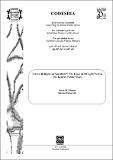| dc.description.abstract | This paper examines how Mủngỉkỉ members have used the sect in the public space as a tool of
emancipation. In the paper I argue that Mủngỉkỉ has been using different faces in terms of
religion, names, and approaches, to appear in the public and appropriate their goals. Though
their initial goal was to propagate socialism, the mandate of Mủngỉkỉ in the Kenyan Public
space has been perceived as that of a terror group. Their terror activities in most occasions
have happened with great oversight from the government and the question that lingers in the
minds of many is whether the government is in support of the movement or just overwhelmed
by the Mủngỉkỉ masses. The findings of the study on the one hand indicate that though true
‘Word’ according to most religions is meant to propagate peaceful and abundant life,
especially among the poor, the ‘gospel’ of Mủngỉkỉ instills fear and pain to people, both rich
and poor for various reasons. On the other hand, if Mủngỉkỉ is a social movement designed to
proliferate socialism among the poor citizenry, then their approach is not by any means
approved, following the tenets of socialism theories. Being a very stable religious/social and
political movement, the fear of many Kenyans is that the future of the group still looks bright,
and the lives of many Kenyans continue to be in danger. | en_US |

